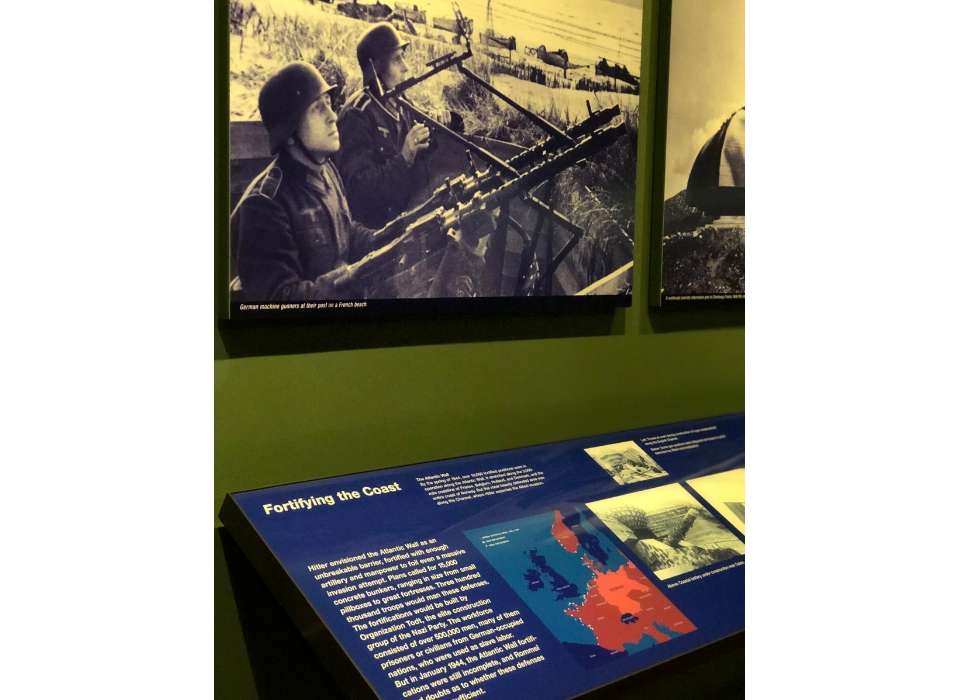From time to time during World War II, Adolf Hitler issued so-called “Führer Directives,” general strategic guidelines on how his forces were to conduct the struggle.
One of his most momentous appeared on November 3, 1943. Führer Directive No. 51 called for a fundamental reorientation of German strategy. Up to now, Hitler noted, “the hard and expensive battle” on the Eastern Front against the Soviet Union had required all of Germany’s strength. But now, he said, Germany faced an even greater threat: a potential Anglo-American landing in the West. German defenses here were weak: second-rate divisions, incomplete fortifications. The time had come, Hitler warned, to strengthen the west and to make sure that it was prepared for the decisive struggle.
These improvements had to proceed on two separate tracks. First, the coastal defenses in France and Western Europe required a thorough upgrade in order either to stop or at least to delay the attackers. Second, the German army needed to mass forces in the West, forming a group of full-strength, modern Panzer divisions, a mighty armored instrument to counterattack the Allied forces in the course of their landing and drive them into the sea.
Certainly, the Germans succeeded in the first activity, building a comprehensive system of fortifications along the coast. Eventually, it would become known as the “Atlantic Wall,” a great network of coastal fortifications. The numbers boggle the mind: 15,000 concrete bunkers stretching some 2,000 miles from southern France to northern Norway; 1.2 million tons of steel; 17 million cubic meters of concrete. The Atlantic Wall cost 3.7 billion Reichsmarks in the money of the day, over $200 billion in today’s money. Some 600,000 men worked on it, and this being the Nazi Reich, many of them, perhaps most, were slave laborers conscripted from the local population.
But what about that second activity, forming a mighty armored reserve? Not so much. Here, Hitler’s strategic plans ran squarely into military reality, 1943-style. Most of the German army was trapped in the killing fields of the Eastern Front, being ground up mercilessly by superior Soviet forces. The Red Army celebrated the New Year of 1944 in its typical fashion by launching a series of massive offensives in the Ukraine, involving all four of their heavily armored fronts (army groups) in the sector. Successive hammer blows culminated in the final loss of the Dnepr line, the encirclement of most of the German Eighth Army in the Korsun Pocket, and the near destruction of Field Marshal Erich von Manstein's Army Group South.
The attempt to mass forces in the West, as sensible as it might have seemed in isolation, soon had to give way to the military reality of a multifront war. Beset by superior enemies in the east, west, and south, there was little that the High Command could do except plug the most dangerous hole at the moment, and that meant taking divisions from quiet France, or divisions that had been previously earmarked for duty there, and shipping them to the hot spot of the week.
By the end of January 1944, the Allies had staged an amphibious landing at Anzio, just south of Rome, and Hitler issued a new Directive, No. 52. This one called for a "tough and merciless struggle" against the enemy in Italy and ordered reinforcements to be rushed to the Italian front. Two good fresh divisions, the 90th Panzergrenadier Division and the Hermann Göring Parachute Panzer Division, were soon on their way to plug the hole at Anzio.
Call Directive No. 51 a partial success. The Germans had strengthened their fortifications in the West, certainly. But would they be able to find the troops to man them? That was the question as the Spring of 1944 approached and the Allied landing beckoned.
Robert Citino, PhD
Robert Citino, PhD, is the former Samuel Zemurray Stone Senior Historian in the Jenny Craig Institute for the Study of War and Democracy.
Cite this article:
MLA Citation:
APA Citation:
Chicago Style Citation:





![Max Fuchs, New York City cantor, sings as Rabbi Sydney [sic] Lefkowitz, Richmond, VA, conducts the first Jewish services from Germany.](/sites/default/files/styles/max_650x650/public/2025-10/image1.jpg)



